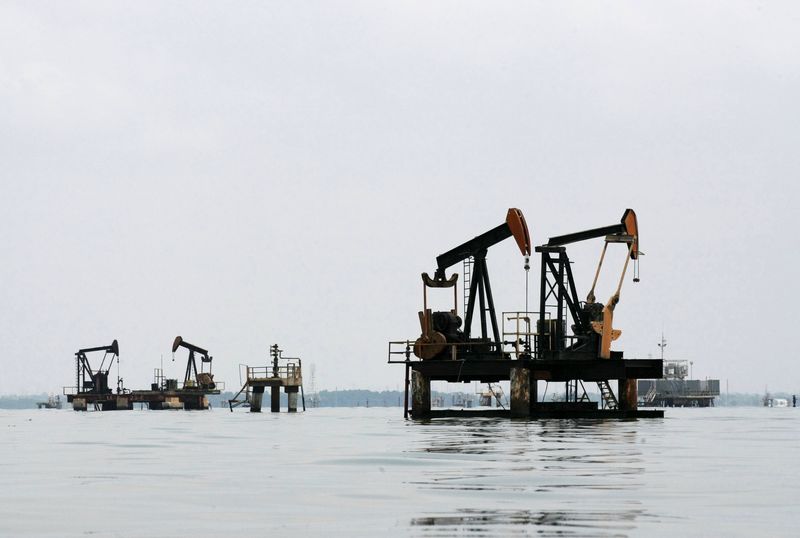By Yuka Obayashi and Muyu Xu
TOKYO/SINGAPORE (Reuters) -Oil fell for a second day on Wednesday as concerns over global economic headwinds deepened, erasing the price gains booked after top crude exporter Saudi Arabia’s surprise weekend pledge to deepen output cuts.
futures were down 56 cents, or 0.7%, at $75.73 a barrel at 0705 GMT. The U.S. West Texas Intermediate crude futures fell 52 cents, also 0.7%, to $71.22 a barrel.
Both benchmarks jumped more than $1 on Monday after Saudi Arabia’s decision over the weekend to reduce output by 1 million barrels per day (bpd) to 9 million bpd in July.
“The fears of recession, as more and more sombre economic readings point towards a slowdown, have kept a lid on oil prices, eroding all OPEC+’s efforts to keep prices afloat,” Priyanka Sachdeva, an analyst at Phillip Nova, said in a note.
U.S. gasoline inventories rose by about 2.4 million barrels and distillates inventories were up by about 4.5 million barrels in the week ended June 2, market sources said on Tuesday, citing American Petroleum Institute figures.
The unexpected buildup of fuel stockpiles raised concerns over consumption by the world’s top oil user, especially as travel demand grew during the Memorial Day weekend.
Meanwhile, the U.S. Energy Information Administration (EIA) said on Tuesday that U.S production this year would rise faster and demand increases would cool compared to prior expectations.
“The market has digested the news of Saudi’s production cut and investors are now reluctant to take a large position because of mixed economic forecasts and indicators in the United States and China,” said Hiroyuki Kikukawa, president of NS Trading, a unit of Nissan (OTC:) Securities.
China’s official data showed on Wednesday that its exports shrank much faster than expected in May and imports fell, albeit at a slower pace, as manufacturers struggled to find demand abroad and domestic consumption remained sluggish.
The data also showed crude oil imports into China, the world’s largest oil importer, in May rose to their third-highest monthly level ever as refiners built up inventories.
A JP Morgan note showed forward crude cover in the country has climbed, indicating refiners have not increased processing rates but are instead storing oil.
Nonetheless, some analysts expected Saudi Arabia’s voluntary cut, the biggest in the kingdom in years, would put a floor under oil prices, although it was unlikely to underpin a sustainable price increase into the high $80s-low $90s per barrel range.
“We expect oil prices to test upside as we enter the summer driving season in the United States,” Kikukawa said, adding that tighter global supply and U.S. plans to buy crude to refill the Strategic Petroleum Reserve would limit the downside.
Read the full article here
